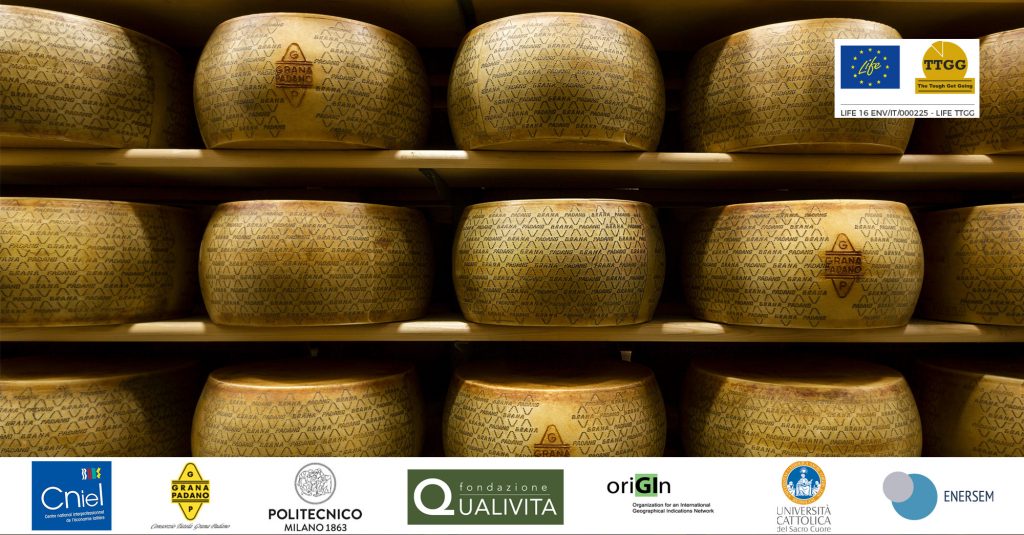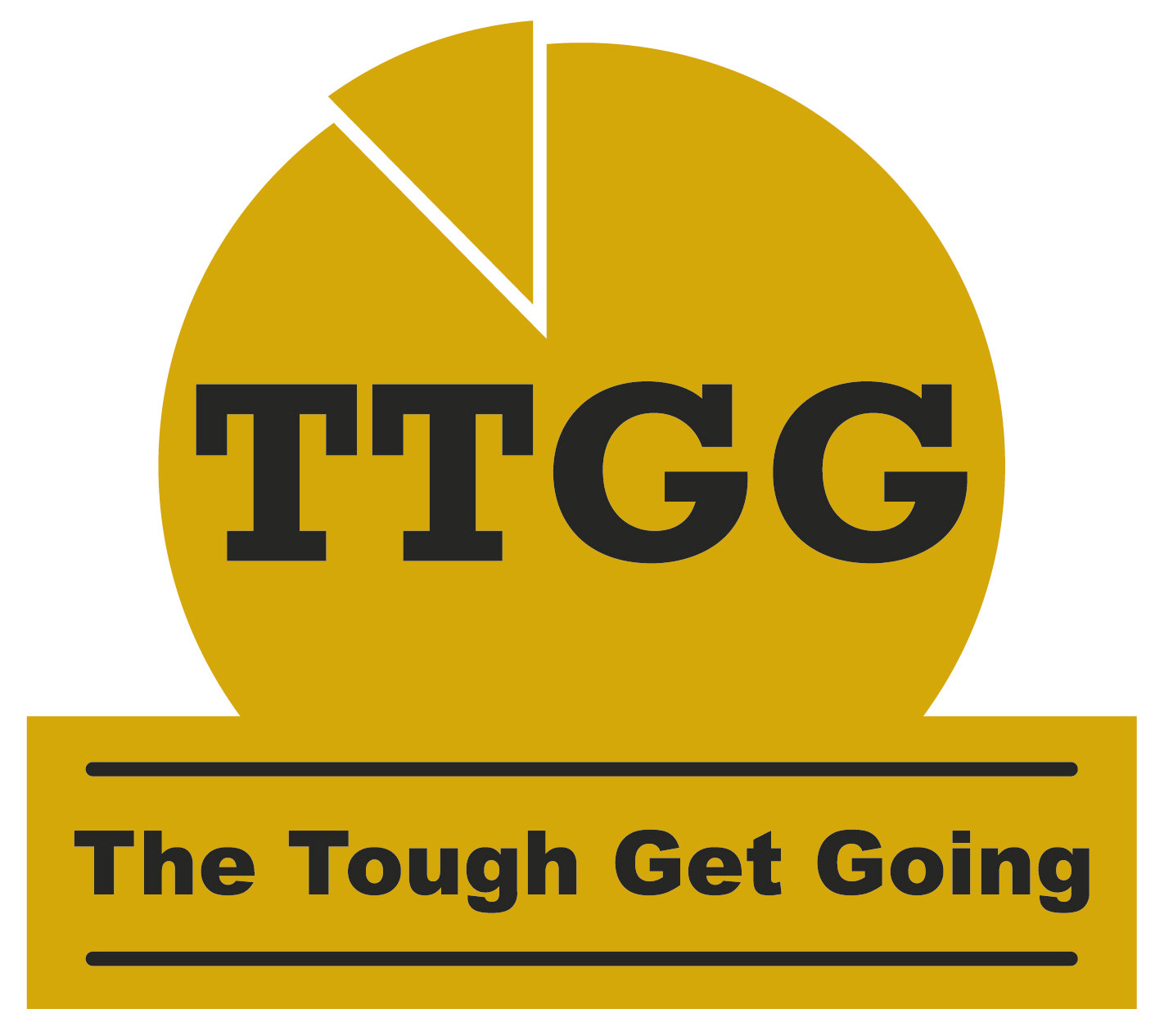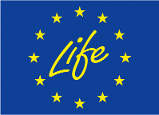First results from the PDO Grana Padano and Comté to support new environmental efficiency solutions

After analyzing the supply chains, the team of the LIFE TTGG project is developing a software to indicate solutions to reduce the environmental impact of the PDO cheese in the EU
The preliminary results of the Life TTGG project were presented at the international level through the online event organized by oriGIn: “Improving the efficiency of PDO cheese production processes in Europe: The LIFE TTGG Project, intermediary results”.
The event aimed to disseminate the preliminary results regarding implementing the Product Environmental Footprint (PEF) methodology in the PDO Grana Padano and Comté cheese supply chains, including the possible mitigation actions identified to reduce the environmental impact demonstrate how innovation can be introduced without encroaching on tradition. The online event was attended by representatives of national GI associations, GI groups, universities, and institutions from some 20 countries.
To limit global warming, the reduction of greenhouse gas emissions in the coming decades will have to be substantial and affect all productive sectors, including agriculture, which today is the source of about 10-12% of total emissions worldwide.
To meet this need, in line with the Farm to Fork strategy, the core of the European Green Deal, the LIFE TTGG (The Tough Get Going) project, has been working since 2016 with the PDO Grana Padano and Comté, the first in Europe available to provide a full-scale analysis. The LIFE TTGG project partenrs are the Grana Padano Protection Consortium, Politecnico di Milano, UCSC University of Piacenza, Qualivita Foundation, oriGIn, Enersem and CNIEL. The project involved i) the Grana Padano PDO – 68 farms, 20 dairies, 20 ripeners, and 20 packers and ii) the Comté PDO – 29 farms, 19 dairies, and 5 ripeners.
The results showed that the raw milk production phase contributes 90-92% to the environmental profile of Grana Padano PDO, the dairy processing and packaging phases for 6-7%, while the distribution and end-of-life phases for the remaining 2-3%. For the raw milk production phase, the hotspots concern the purchase of feed (34%), the own production of feed (25%), the management of manure (16%), and enteric fermentation (12%). For the milk transformation phase, the results underline that the most impacting factors were the consumption of heat (34%) and electricity (26%).
In the coming months, the software to support environmental decisions will be finalized, thanks to the outcomes from the PEF method combined with energy audits applied to the entire dairy supply chain. It will allow producers of PDO cheese to apply the PEF methodology to calculate the environmental footprint of their packaged products and, at the same time, to improve the production system from both an environmental and an economic point of view.
Declarations
Mr. Renato Zaghini, President, Consorzio di tutela Grana Padano.
The Grana Padano Protection Consortium is sensitive to the subject of environmental sustainability. By joining this project, we set three main objectives: i) understanding the significant environmental impacts along the Grana Padano production chain, ii) identifying where we can intervene to mitigate these impacts, providing actors within the production chain with strategic tools to stimulate learning, and iii) support innovative capacity to reduce impact. We are satisfied that the first results of the LIFE TTGG project can be seen.
Mr. Jacopo Famiglietti, Politecnico di Milano – Scientific Coordinator LIFE TTGG
The European dairy sector represents one of the principal players at the global level for import and export and is crucial for jobs and wealth creation at the EU level. However, if we consider its environmental impacts, GHG emissions, water consumption, land use, etc., should not be underestimated. Solutions are needed to improve cheeses’ supply chain efficiency and reduce their environmental footprint. In this context, we launched the project LIFE The Tough Get Going encouraging collaboration among universities, start-ups, manufacturing companies, EU GIs Groups, and research organizations.
Mr. Ronan Lasbleiz, Conseil National des Appellations d’Origine Laitières (CNAOL).
The participation of CNIEL (French dairy interbranch association) and CNAOL (the dairy PDO federation) with the support of Actalia in the LIFE TTGG project aims at supporting the project development at the European level. The PDO Comté was selected for its relevance to collect data on 29 farms, 19 dairies, and 5 cheese refiners. The PEF methodology is being implemented on the production chain, and the results will be available in early 2022.
Mr. Federico Froldi, PhD, Università Cattolica del Sacro Cuore.
The contribution of milk production to the environment involves a complex and engaging task requiring accurate data collection, emission estimate, and impact modeling. Then, the results are opportunities for identifying hotspots and improving the environmental performance of dairy farms through tailored mitigation actions for the sustainable development of the dairy sector.
Mr. Matteo Muscherá, ENERSEM
The Life TTGG project preliminary results bring to light interesting opportunities to improve the energy efficiency in Grana Padano dairies. Specifically, heat recovery from whey and from chiller condenser and cooling production plant revamping are the most relevant energy efficiency strategies. All PDO dairies will be able to evaluate the energy reduction potential thanks to the EDSS software. Further steps are the ultimate implementation of the software and the application to other cheese and non-cheese PDOs.
Mr. Luca Giannelli, Politecnico di Milano
More sustainable production and consumption is achievable only considering the whole supply chain of products, including waste management. In the Grana Padano PDO supply chain, a functional packaging design is fundamental to help the consumer prevent food waste because food lost and wasted generates an additional 9% of environmental impact. A cheese packaging, adequately planned, must first reduce food waste and the environmental impact of the supply chain and then should minimize the environmental impact of the packaging itself.
>> Download the event information and speakers’ presentations <<
Fonte: Fondazione Qualivita, oriGIn

